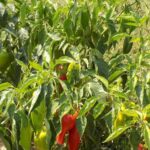A well-planned and organized schedule is crucial for success in vegetable gardening, which is why a gardening vegetable calendar is essential. From preparing the soil to harvesting the produce, every step in the process requires strategic planning and timing. In this article, we will delve into the significance of following a gardening vegetable calendar and how it can lead to a fruitful harvest.
Understanding the specific planting zones based on climate is crucial when creating a gardening vegetable calendar. Different regions have different growing seasons and temperature variations that directly impact vegetable cultivation. By understanding these factors, gardeners can optimize their planting schedules according to their specific area and maximize their yield.
Creating a personalized gardening vegetable calendar involves careful consideration of various factors such as plant compatibility, local climate, and frost dates. This step-by-step guide will provide valuable insights into how to set up an effective calendar tailored to your individual needs and conditions. Whether you are a novice or an experienced gardener, having a customized plan can make all the difference in your garden’s success.
Understanding the Planting Zones
When it comes to vegetable gardening, understanding the planting zones is crucial for successful cultivation. Planting zones, also known as hardiness zones, help determine which plants are most likely to thrive in a specific area based on its climate.
The United States Department of Agriculture (USDA) has divided the country into 13 different planting zones based on average minimum winter temperatures. By knowing which planting zone you are in, you can effectively select the right vegetables for your garden and ensure their optimal growth.
Each planting zone has specific characteristics that directly impact vegetable gardening. For example, in colder climates with shorter growing seasons, cold-hardy vegetables such as kale, broccoli, and carrots are more suitable for cultivation. On the other hand, warmer climates with longer growing seasons can accommodate heat-loving vegetables like tomatoes, peppers, and squash. Understanding these differences in climate zones allows gardeners to make informed decisions about what to plant and when to plant it.
Creating a personalized gardening vegetable calendar starts with identifying your planting zone and understanding its unique climate considerations. By taking these factors into account, you can plan your planting schedule accordingly for a successful harvest. Whether you’re located in a frost-prone zone or a warm and sunny region, knowing your planting zone is essential for maximizing the potential of your vegetable garden throughout the year.
Setting Up the Calendar
Creating a personalized gardening vegetable calendar is crucial for successful cultivation. By planning and organizing your planting schedule, you can maximize your garden’s productivity and ensure a bountiful harvest throughout the year. Whether you are a beginner or experienced gardener, following a gardening vegetable calendar will help you stay on track and make the most of your growing season.
To start, it’s important to understand your local planting zone and climate. Different regions have varying temperature and weather patterns that directly impact the success of vegetable gardening. Determine which planting zone you are in to know the right timing for planting each type of vegetable. This information can usually be found through local agricultural extension offices or online resources specifically dedicated to gardening vegetable calendars.
Once you have identified your planting zone, the next step is to select the vegetables you want to grow. Consider factors such as your family’s preferences, preferred cooking styles, and dietary needs when choosing what to plant. Make a list of vegetables that thrive in your specific climate and appeal to your tastes. From there, create a monthly schedule outlining when each type of vegetable should be planted, based on your local frost dates and growing season length.
Finally, set up a visual calendar or planner where you can map out your planting schedule for each month. This can be done digitally or using traditional pen and paper – whichever method works best for you. Be sure to include reminders for soil preparation, watering schedules, maintenance tasks, and any other important notes related to caring for your garden. By having a clear plan in place, you’ll be better equipped to manage your garden effectively throughout the year.
| Month | Tasks |
|---|---|
| March | Start indoor seeds such as tomatoes, peppers |
| April | Prepare outdoor beds; plant cool-season vegetables like lettuce, kale |
| May | Transplant seedlings outdoors; plant warm-season vegetables like cucumbers, zucchini |
Seasonal Planting Guide
Spring Planting
In the spring, it’s time to start planting cool-season vegetables such as lettuce, spinach, kale, and peas. These vegetables thrive in the cooler temperatures of early spring and can be planted as soon as the soil can be worked. Other popular choices for spring planting include broccoli, cabbage, carrots, and radishes. Make sure to check your gardening vegetable calendar to determine the best time for planting based on your specific location and climate zone.
Summer Planting
As the weather warms up, it’s time to transition to warm-season vegetables for summer planting. This includes tomatoes, peppers, cucumbers, zucchini, beans, and corn. These vegetables require warmer soil temperatures to thrive so it’s important to wait until after the last frost date in your area before planting them. Again, consulting your gardening vegetable calendar will help you determine the optimal timing for summer planting.
Fall Planting
In the fall, it’s time to plant another round of cool-season vegetables that can withstand cooler temperatures and even light frosts. This includes root vegetables such as turnips, beets, and carrots, as well as leafy greens like lettuce and kale.
Fall is also a good time to plant garlic and onions for a harvest the following year. By following a gardening vegetable calendar that takes into account your local climate zone and average first frost date, you can ensure that your fall-planted vegetables have enough time to mature before winter sets in.
By understanding which vegetables are best suited for each season and when to plant them based on your specific climate zone, you can maximize the yield of your vegetable garden throughout the year. Following a gardening vegetable calendar will not only lead to a successful harvest but also help you make the most of each growing season.
Soil Preparation
Testing and Amending the Soil
Before planting any vegetables, it’s essential to test the soil to determine its pH levels, nutrient content, and structure. This can be done using a simple DIY soil test kit or by sending a sample to a professional lab for analysis. Based on the results, you may need to amend the soil with organic matter, compost, or specific nutrients to create the ideal growing environment for your vegetables.
Importance of Soil Health
Healthy soil is the foundation of a successful vegetable garden. It provides essential nutrients and support for plant roots, improves water retention, and aids in overall plant growth. By maintaining good soil health, you can also prevent diseases and ward off pests that may otherwise damage your vegetable crops. Regularly testing and amending the soil based on its needs is crucial for ensuring optimal conditions for your garden.
Composting and Mulching
One of the most effective ways to improve soil health is through composting and mulching. Compost adds valuable organic matter to the soil, enriching it with nutrients and promoting beneficial microbial activity. Mulch helps retain moisture in the soil, suppresses weed growth, and enhances overall soil structure. By incorporating these practices into your gardening routine, you can maintain healthy, fertile soil that will support thriving vegetable plants throughout the year.
By following these tips on preparing your soil for planting and understanding the importance of soil health in vegetable gardening, you can ensure that your gardening vegetable calendar yields bountiful harvests of fresh produce.
Maintenance and Care
Maintaining a vegetable garden throughout the year is crucial to ensure a bountiful harvest. Proper care and maintenance can help prevent diseases, pests, and other issues that may hinder the growth of your vegetables. Here are some essential tips for maintaining and caring for your vegetable garden:
Watering
Proper watering is essential for the health of your plants. Different vegetables have different water requirements, so it’s important to understand the specific needs of each type of vegetable in your garden. Overwatering can lead to root rot, while underwatering can cause wilting and stunted growth.
Weeding
Weeds can compete with your vegetables for nutrients and water, so it’s important to regularly remove them from your garden. Use a hoe or hand pull weeds to prevent them from taking over your garden.
Fertilizing
Fertilizing is important for replenishing nutrients in the soil that may be depleted as the vegetables grow. Use organic fertilizers or compost to provide essential nutrients to your plants without harmful chemicals.
In addition to these tasks, it’s also important to monitor for any signs of pests or diseases and take appropriate action as soon as they are spotted. By staying on top of maintenance and care tasks throughout the year, you’ll set yourself up for a successful gardening vegetable calendar harvest.
Harvesting Schedule
Knowing when to harvest your vegetables is crucial for enjoying them at their peak flavor and nutritional value. Each type of vegetable has its own specific signs that indicate it is ready for harvesting, and understanding these signs will ensure a bountiful and delicious harvest from your garden. By following a gardening vegetable calendar, you can stay organized and keep track of when each type of vegetable should be harvested based on your local climate and planting zones.
One key factor in determining when to harvest vegetables is observing their ripeness. For example, tomatoes should be picked when they are fully colored and firm but yield slightly to pressure, while cucumbers are best harvested when they are still firm and before they become overripe and bitter. Additionally, root vegetables like carrots and radishes should be harvested once their tops push up out of the soil, indicating that they have reached a desirable size.
Another important consideration for harvesting vegetables is the time of day. In general, it is best to harvest vegetables in the early morning or late afternoon when temperatures are cooler. This helps preserve the quality of the produce by reducing wilting and dehydration that can occur during hot midday temperatures.
Furthermore, some vegetables can continue to grow after harvesting if not picked at the right time. For example, allowing zucchinis to grow too large on the plant can result in a tougher texture and less flavor. Therefore, regularly consulting a gardening vegetable calendar that is tailored to your specific planting zone will ensure that you know exactly when each type of vegetable in your garden is ripe for picking.
| Vegetable | Signs for Harvest |
|---|---|
| Tomatoes | Fully colored, firm but yield slightly to pressure |
| Cucumbers | Firm with no yellowing or soft spots |
| Carrots | Tops push up out of the soil indicating adequate size |
Troubleshooting and Problem-Solving
When following a gardening vegetable calendar, it’s essential to be prepared for any challenges that may arise during the cultivation process. From unpredictable weather patterns to pesky pests, there are several common issues that gardeners may encounter. By addressing these challenges proactively, gardeners can ensure the success of their vegetable garden.
One common issue that gardeners may face is pest infestation. Insects such as aphids, caterpillars, and beetles can wreak havoc on vegetable plants if not managed effectively. To address this issue, it’s important to regularly inspect the plants for signs of pest damage and take appropriate measures such as applying organic insecticidal soap or introducing beneficial predators like ladybugs to control the pest population.
Another challenge that gardeners may encounter is soil nutrient deficiencies. Over time, the soil in a vegetable garden can become depleted of essential nutrients, affecting the growth and overall health of the plants. To mitigate this issue, it’s crucial to regularly test the soil and amend it with organic matter and fertilizers as needed. Additionally, rotating crops annually can help prevent nutrient depletion in the soil.
Weather fluctuations can also pose a challenge for vegetable gardening. Sudden temperature changes or extreme weather events like heavy rainfall or drought can impact plant growth and development. By staying informed about local weather forecasts and taking preventative measures such as installing protective covers or providing supplemental irrigation when necessary, gardeners can mitigate the effects of unpredictable weather patterns on their vegetable garden.
By being aware of these common issues and implementing proactive measures to address them, gardeners can navigate through potential challenges and ensure a successful harvest from their vegetable garden. Following a gardening vegetable calendar not only involves proper planting schedules but also requires vigilance in troubleshooting and problem-solving to maintain a healthy and productive garden throughout the year.
Conclusion
In conclusion, following a gardening vegetable calendar is essential for successful cultivation. By understanding the different planting zones and creating a personalized calendar, gardeners can ensure that they are planting the right vegetables at the right time. This leads to healthier plants, higher yields, and overall more successful harvests.
The seasonal planting guide provided in the gardening vegetable calendar helps gardeners know exactly what to plant in each season and when to do so. This ensures that plants have the best possible conditions for growth and development. Additionally, proper soil preparation and maintenance throughout the year are crucial for the health of the vegetable garden. By following a gardening vegetable calendar, gardeners can stay on top of these important tasks.
Moreover, having a harvesting schedule allows gardeners to know exactly when to harvest different vegetables based on their maturity and readiness. Finally, by addressing common issues and challenges through troubleshooting and problem-solving techniques, gardeners can overcome obstacles and ensure a successful harvest. Overall, following a gardening vegetable calendar is key to achieving thriving vegetable gardens with bountiful yields.
Frequently Asked Questions
What Month Should I Plant My Vegetable Garden?
The best month to plant your vegetable garden will depend on your local climate and the specific vegetables you want to grow. In general, it’s best to plant in the spring after the last frost has passed, but some vegetables may do well if planted in late summer or early fall.
Which Vegetables Grow Well Together Chart?
When selecting which vegetables to grow together in a garden, it’s important to consider their compatibility in terms of growth habits, light and water requirements, as well as soil preferences. For example, tomatoes and basil are often recommended to be grown together, as they complement each other’s growth and also make great culinary companions.
What Is a Good Layout for a Vegetable Garden?
A good layout for a vegetable garden is one that maximizes space and sunlight, while also allowing for easy access for planting, weeding, and harvesting. Raised beds or rows can be used to organize different vegetables based on their height and spacing needs.
Additionally, companion planting and crop rotation can be incorporated into the layout to promote healthier plants and reduce pests.

If you’re looking to get into vegetable gardening, or are just looking for some tips on how to make your current garden better, then you’ve come to the right place! My name is Ethel and I have been gardening for years. In this blog, I’m going to share with you some of my best tips on how to create a successful vegetable garden.





